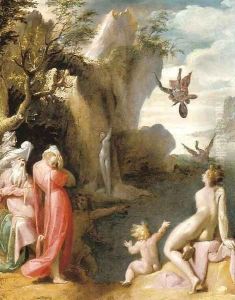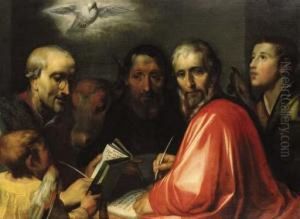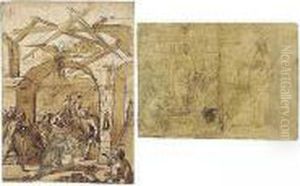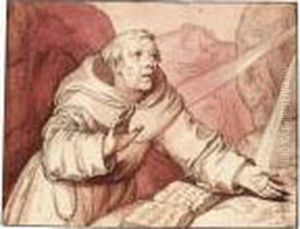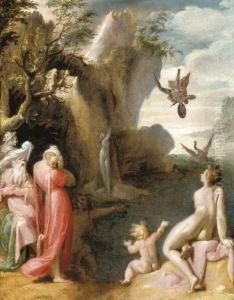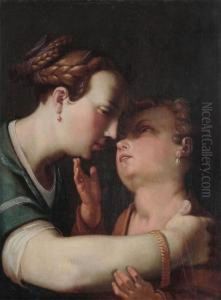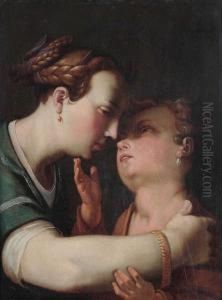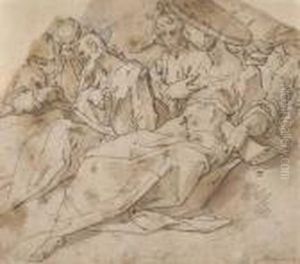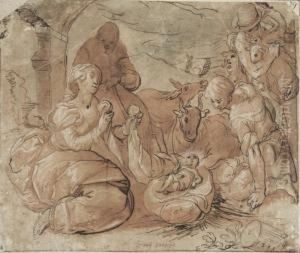Gerrit Pietersz. Sweelinck Paintings
Gerrit Pietersz. Sweelinck, also known as Gerrit Pietersz, was a Dutch Renaissance painter active during the late 16th and early 17th centuries. Born in 1566 in Amsterdam, he was part of a family that was notable in the artistic and musical life of the Netherlands. His brother, Jan Pieterszoon Sweelinck, was a famous composer and organist, suggesting a family deeply embedded in the cultural fabric of the Dutch Golden Age.
Sweelinck's career as a painter was marked by the influence of the Flemish style, which was prominent in the Low Countries during his time. His work was known for its attention to detail and its employment of chiaroscuro, the technique of using strong contrasts between light and dark to give the illusion of depth and volume. This was a common trait among artists who were influenced by the works of Caravaggio and his followers.
Unfortunately, unlike his brother Jan, Gerrit did not achieve the same level of fame and his works are lesser-known. Historical records of his career are scarce, and many details of his life remain obscure. However, it is believed that he primarily painted portraits and religious subjects, which was typical for artists of his time.
Sweelinck's death occurred in 1612 in Amsterdam. His works are considered rare, and as such, they are valuable for understanding the breadth and diversity of Dutch Renaissance painting. Despite his relative obscurity compared to other artists of the period, Sweelinck contributed to the rich tapestry of Northern European art and his legacy is preserved in the few paintings attributed to him that still exist.
